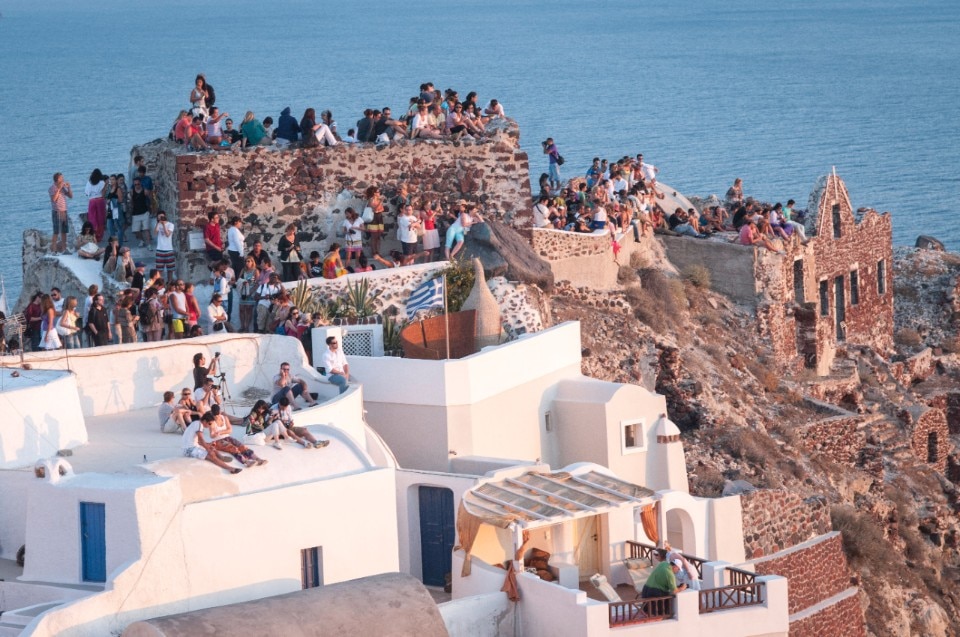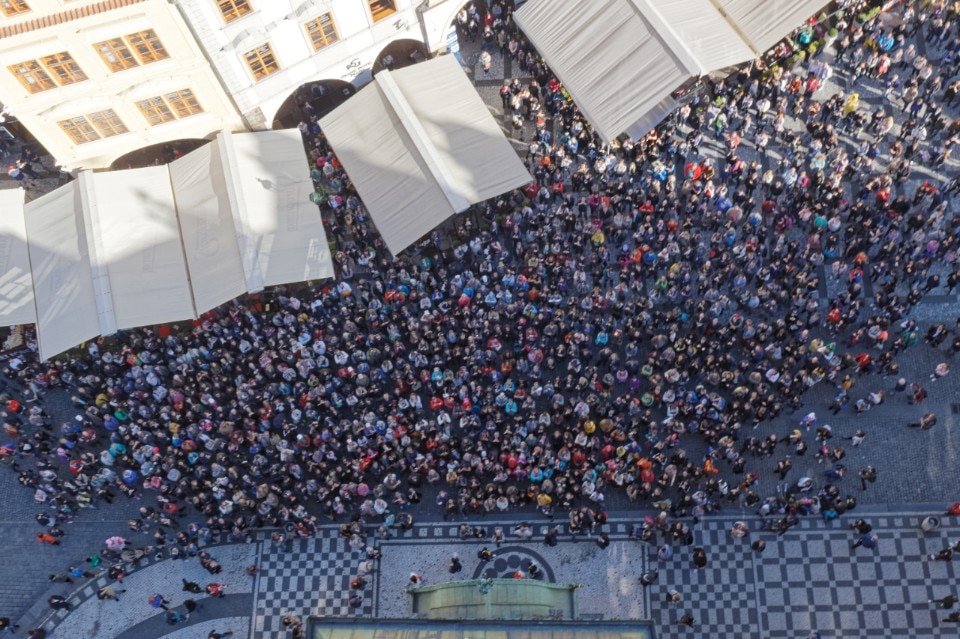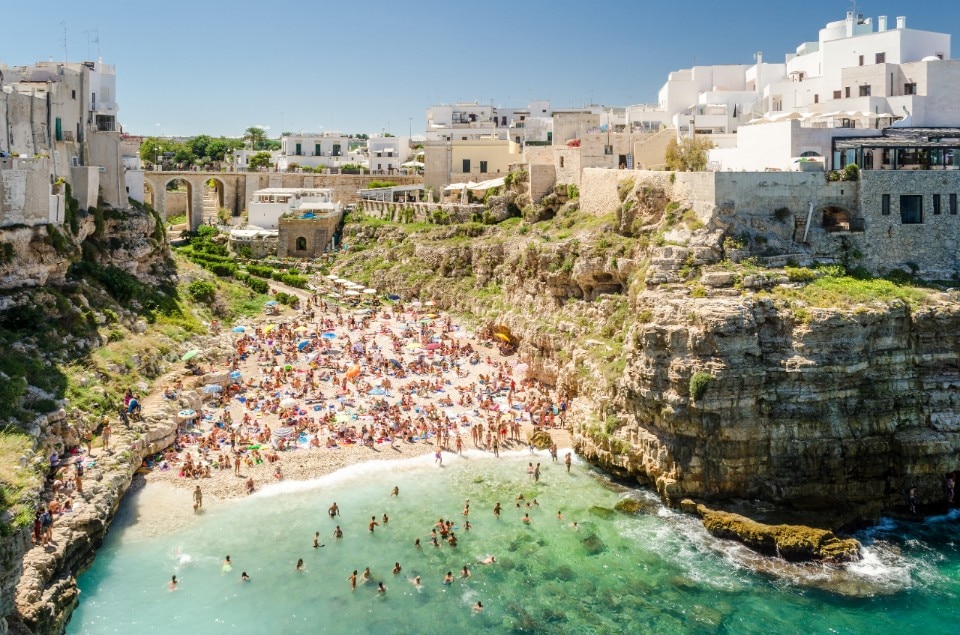At some point during today’s travel experience, the sense of wonder fades. It happens when you realize you’re taking the exact same photo you’ve seen a thousand times on social media: same angle, same pose. Sometimes, the image we were once captivated by ends up being more impressive than the place itself.
For tourists, this disillusionment is fleeting. But for those living in these places every day, the burden of mass tourism becomes permanent.

In Lisbon, the influx of digital nomads and tourists caused rent prices to jump 37% between 2015 and 2022, pushing out longtime residents and transforming neighborhoods like Alfama into postcard-perfect settings.
The phenomenon of “Lisbonification” has spread well beyond Portugal. Venice, for instance, has become a symbol of overtourism. Since 2024, the city has charged an entrance fee for day visitors to manage crowds and preserve its livability. The Balearic Islands recently introduced measures to curb mass tourism, including restrictions on short-term rentals, a halt to influencer-led promotional campaigns, and a moratorium on new hotel construction. These steps followed protests from locals, who took to the streets demanding tourists to “go home.”
Instagram and TikTok have redefined how we travel. We no longer seek the unknown – or even what’s familiar [...] in essence, we create images to confirm an existing fantasy.
Yet authorities turned to social media for a solution – and inadvertently made the problem worse. They funded influencer campaigns to promote lesser-known beaches and inland villages, hoping to ease the pressure on hotspots like Ibiza and Palma. But the viral exposure backfired: tourists flocked to these “hidden gems,” causing overcrowding, environmental damage, and more protests. In Es Caló de Sant Agustí, a small village in Formentera, residents even called for blocking access to the coves. On Cabrera Island, a fragile nature reserve, the surge in visitors threatened the local ecosystem.
@gzzmtn C’è chi dice questo sia l’anno in cui si è rotto il turismo. Voi che ne pensate? #eurosummer #europeansummer #eurosummeraesthetic #overtourism #turismo #italiansummer #amalficoast #costieraamalfitana #suditalia #viaggiare #traveltok ♬ original sound - Martina | fashion + culture
This shows how even the most remote places can be overwhelmed by sudden digital fame. When tourists flock to destinations once off the radar, local infrastructure is often ill-equipped to handle the strain.
A study in the Journal of Outdoor Recreation and Tourism (Wengel et al., 2022) highlights this phenomenon. It focuses on a viral video showcasing “a breathtaking sunrise over a sea of clouds” in Hainan, China. The short clip, which received over 65,000 likes, led to a dramatic rise in visitors to the national park – from 50 to 600 per day in just one month.
This surge caused traffic congestion, pollution, and unsustainable pressure on already underdeveloped infrastructure. TikTok’s algorithm, which promotes content with high engagement in the first hour, makes it nearly impossible for destinations to anticipate these spikes. The Hainan case is just one example: similar situations are unfolding at Kiyomizu-dera in Kyoto, Lake Braies in South Tyrol, Monet’s house in Giverny, and the Glenfinnan Viaduct in Scotland, made famous by Harry Potter films.

Instagram and TikTok have redefined how we travel. We no longer seek the unknown – or even what’s familiar – we chase images that are already well-known and highly shareable, affirming our place in a global community. We travel pursuing stories shaped by others, where the experience is influenced more by digital narratives than personal exploration. In essence, we create images to confirm an existing fantasy.
John Urry, in his Tourist Gaze Theory, already predicted how the traveler’s gaze was shaped by cultural codes. In the 18th century, the Grand Tour shaped Europe’s elite. In the 19th century, people traveled to spas for health benefits. Romantics sought solitude and introspection, while mass tourism in the 20th century became a collective ritual. Today, the digital gaze adds a new filter: validation through likes and shares. Landscapes are chosen based on how they’ll appear in social media feeds. We no longer look at the world; we look at its representation.
However, what we deem “worthy” of the tourist gaze has never been spontaneous. There’s no clear line between the ordinary and the extraordinary. It’s a constantly shifting threshold, redefined by advertisers, photographers, urban planners, influencers, and creators. These players shape what we expect to see when we travel – and we follow their lead – perpetuating a cycle that constantly updates the tourist imagination. The design and portrayal of places – from brochures to Instagram stories – becomes a form of symbolic power, determining which destinations are desirable and legitimate, and which remain invisible.
Mass tourism consumes resources, increases pollution, harms ecosystems, and empties urban centers. But perhaps most importantly, it drains the meaning from travel. The logic of viral content has led to the compulsive consumption of increasingly homogenized, less authentic destinations. Travel no longer just serves as recreation – it shapes identity and creates transformative experiences. Yet, when travel becomes a mere replication of pre-packaged images – and narrative overtakes authentic experience – the reflective and emotional components that make travel meaningful are lost. The personal experience of travel risks disappearing under the weight of its digital representation.

As Proust wrote, “The true voyage of discovery consists not in seeking new landscapes, but in having new eyes.” Today, those eyes must unlearn how to see through an algorithm. Only then can we return to traveling to discover, not imitate.
Opening image: iStock


